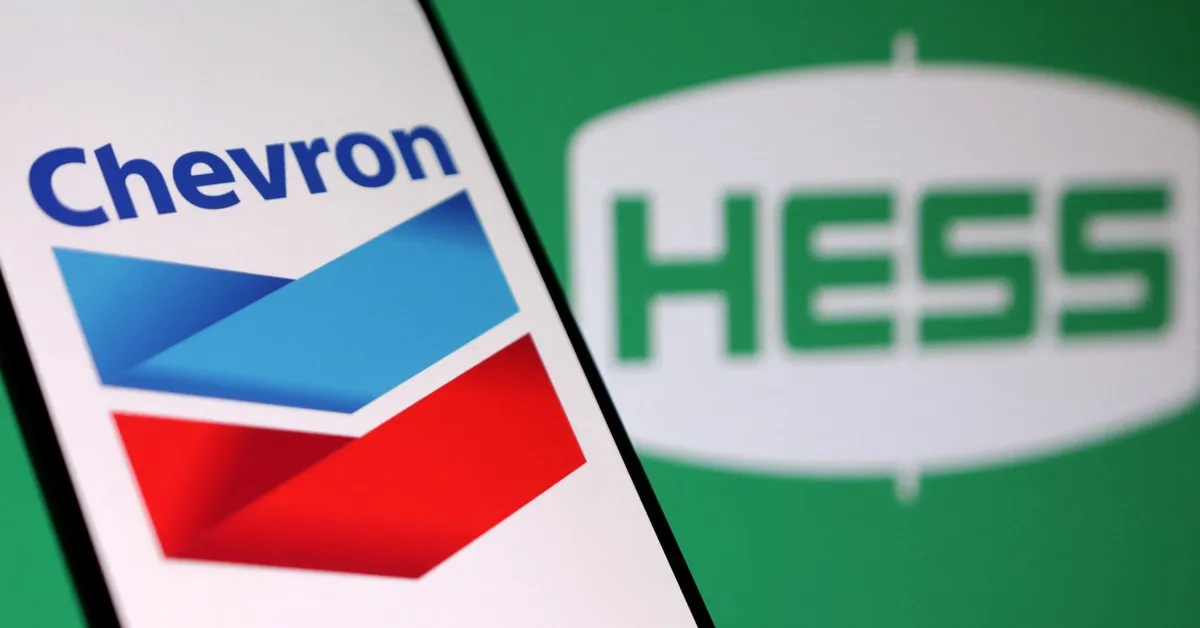
Chevron CEO Mike Wirth is implementing a transformative strategy aimed at revitalizing his company's lagging performance. This approach is centered around a significant acquisition, marking it as one of the largest energy deals in the past decade. The focal point of this acquisition is a substantial stake in the Stabroek Block, located off the coast of Guyana. This block is estimated to hold over 11 billion barrels of oil, positioning it as one of the fastest-growing oil provinces globally.
Wirth emphasized that the merger between Chevron and Hess brings together the best talents in the industry, stating, "This merger of two great American companies brings together the best in the industry." However, the acquisition process faced hurdles when Hess' partners, Exxon and CNOOC, filed arbitration disputes claiming a pre-emptive right to purchase Hess' stake. These disputes delayed the closure of Chevron's acquisition for over a year.
Exxon expressed its disagreement with the International Chamber of Commerce (ICC) panel's interpretation of the case but acknowledged the importance of the arbitration and dispute resolution process. They stated, "Given the significant value we've created in the development of the Guyana resource, we believed we had a clear duty to our investors to consider our preemption rights to protect the value we created through our innovation and hard work."
CNOOC also expressed disappointment with the ruling, noting that there is no appeals process available at the ICC, the court overseeing the arbitration case. Despite awaiting the arbitration verdict, Chevron was proactive in preparing for a swift closure of the deal with Hess. According to reports from Reuters, information technology teams from both Chevron and Hess have been collaborating to facilitate integration, and Hess employees were informed about the option to request severance packages following the deal's closure.
In a recent interview, Wirth disclosed that the process of integrating technology and combining employees from both companies would require a few months to complete. Meanwhile, shares of both Chevron and Exxon experienced marginal declines during morning trading.
The claims made by Exxon and CNOOC initiated a prolonged legal battle that drew the attention of the global oil industry, shareholders, and legal experts who formulate joint operating agreements governing oil partnerships worldwide. This dispute underscores the immense value of the Stabroek Block, which has significantly boosted profits for the Exxon-led consortium while transforming Guyana into one of the world's rapidly growing economies. Furthermore, it still holds potential for further oil discoveries.
Experts have indicated that the dispute primarily revolved around the interpretation of a few words in the confidential joint operating agreement among Exxon, Hess, and CNOOC. Wirth noted, "It didn't have to happen this way. We were engaged in good faith conversations, actually for months, which ended abruptly when we were notified that they (Exxon) were going to file for arbitration."
In a statement to CNBC, which first reported on Chevron's arbitration victory, Exxon's CEO Darren Woods mentioned that the company is reviewing the ruling to potentially adjust contract provisions to ensure favorable outcomes in future disputes. Woods also reassured that Exxon's relationship with Chevron concerning other projects remained stable throughout the arbitration process.
Woods stated, "This was never a Chevron thing. This was more about getting the contracts enforced the way they were intended." Meanwhile, Hess reported a significant increase in earnings from Guyana, soaring to $3.1 billion last year, up from $1.9 billion in 2023. In contrast, Chevron's adjusted earnings fell to $18.3 billion last year from $24.7 billion in 2023.
As the energy sector continues to evolve, Chevron's strategic acquisition and the implications of the ongoing legal disputes will be closely monitored by industry stakeholders and investors alike.